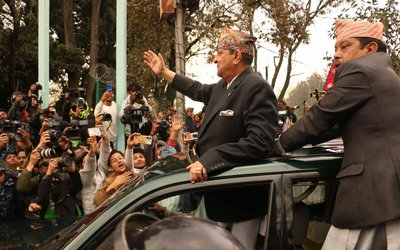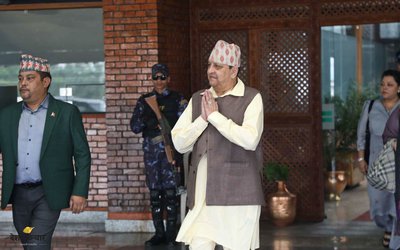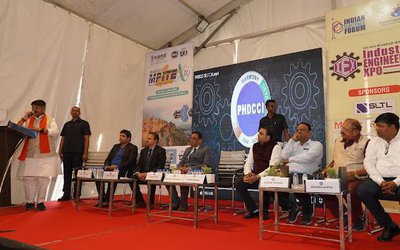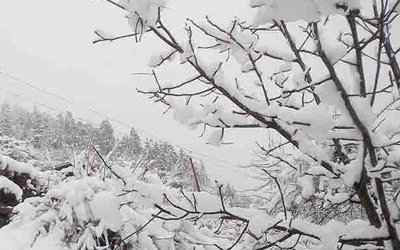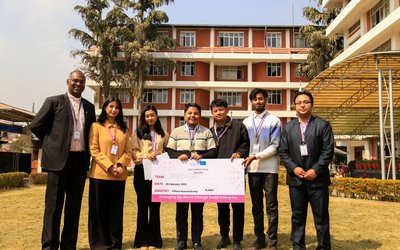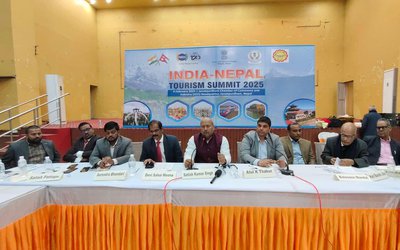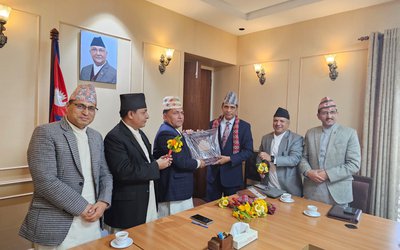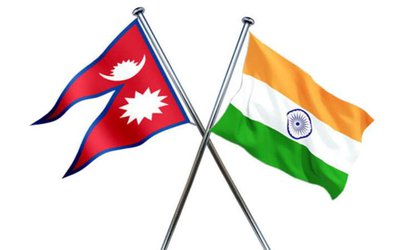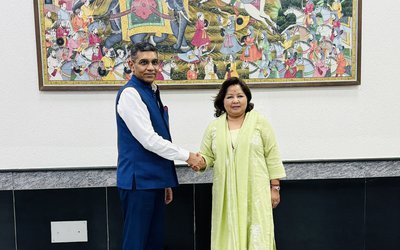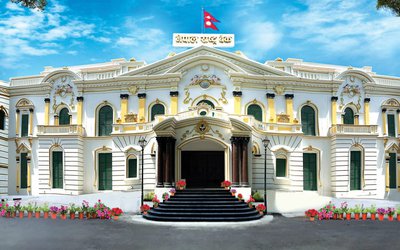
Vidya Devi Bhandari from the ruling CPN-UML was today elected as Nepal's first woman President after she defeated her rival from Nepali Congress by more than 100 votes.
Bhandari, 54, the Vice-president of CPN-UML and widow of late general secretary of the party Madan Bhandari, secured 327 votes against 214 votes of her rival Veteran Nepali Congress leader Kul Bahadur Gurung.
The new President will succeed incumbent Ram Baran Yadav who was elected as the first President of Nepal in 2008 after the country was declared a Republic.
With the promulgation of the Constitution on September 20, it was required to elect a new President within a month of the commencement of the Parliament session.
The incumbent, Ram Baran Yadav, who belonged to Nepali Congress, was elected president in 2008 after the first elections to the Constituent Assembly.
Under the country's new republican federal Constitution, promulgated on September 20, it was mandatory to elect new president and vice-president, prime minister, and parliament speaker and deputy speaker.
"I announce that Bidhya Devi Bhandari has been elected to the post of Nepal's president," said Speaker Onsari Gharti Magar, to loud cheers from lawmakers.
Bhandari, a rare female face in Nepal's parliament, took up politics in her teens, seeking to overturn the absolute monarchy and later marrying a fellow communist, Madan Bhandari PTI reports.
But it was after her husband's death in a vehicle accident in 1993 that the mother of two became a prominent voice, riding a wave of sympathy to win a seat in parliament.
Yadav was initially supposed to hold office for only two years. But years of political wrangling delayed agreement on a new constitution, which was only finally adopted last month.
According to a media reports, Bhandari, 54, is the second woman to be elected to a senior position since then, after Ms Magar became the country's first female Speaker of the parliament.
As required by the new charter, parliament also this month elected a new prime minister, KP Sharma Oli, who is tasked with unifying the earthquake-hit country.
The constitution, the first drawn up by elected representatives, was meant to cement peace and bolster Nepal's transformation to a democratic republic after decades of political instability and a 10-year Maoist insurgency.
More than 40 people have been killed in clashes between police and ethnic minority protesters, who say a new federal structure laid out in the charter adopted last month will leave them under-represented in parliament.
- ADB’S CHIEF ECONOMIST: Nepal Reduces Poverty
- Mar 11, 2025
- FM DR. DEUBA: A Successful Visit
- Mar 11, 2025
- MD GHISING: Target Of Personal Grudge
- Mar 09, 2025
- UPPER TRISHULI-1 HYDROPOWER: Supporting Community Development
- Feb 24, 2025
- ADB POWERING NEPAL: Five Decades Of Support
- Feb 24, 2025
